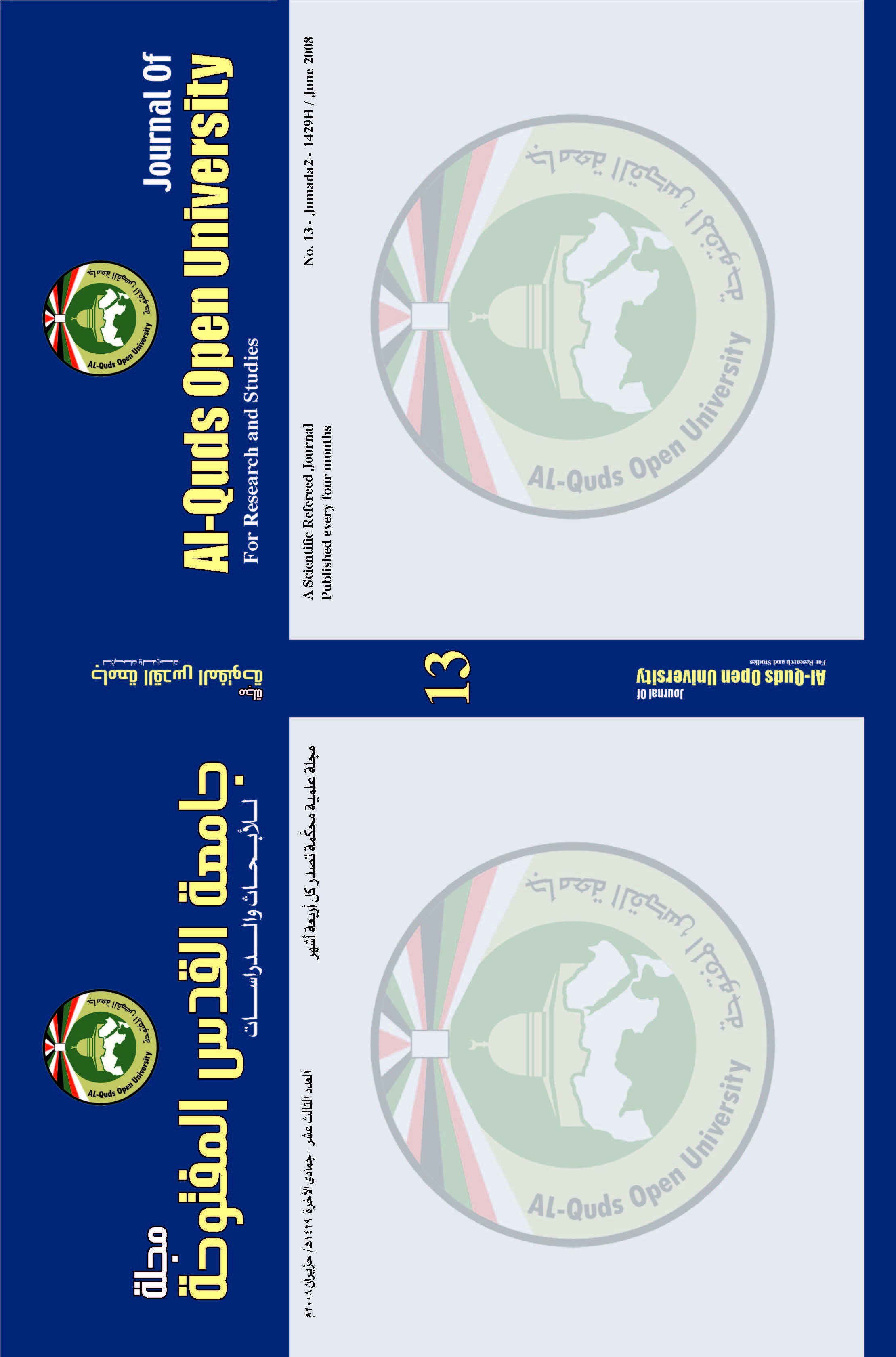The Use of Some Practices Which Support the “Right of Return” among Students in the Eighth and Ninth Grades
Keywords:
Practices, “Right of Return”, Students, Eighth grade, Ninth GradeAbstract
This study tries to discuss some of the disastrous effects of 1948 war, being called An-Naqba, among Palestinians. An-Naqba “The Catastrophe” was the main cause of the Palestinian refugee problem when a great number of the Palestinians were forced to leave their homeland and to settle down in some other places while their villages and towns had been destroyed or resettled with Jews. During the last decades, the International Community has failed to findafairresolutiontotheproblemofrefugees.Nevertheless,the” right of return” is still the dream of millions of refugees who hope to return to their homeland one day. Therefore, the researcher aims at investigating the role of education in supporting and empowering the “right of return” among the Palestinian refugee students.
Generally speaking, this paper aims at answering two main questions: What are the responses of the Eighth and Ninth grade students regarding the use of some practices which aim to support the “right of return”? and do these responses differ due to sex and grade variables?
The results of the study revealed that the overall degree of the students’ responses was in the middle, and that the practices range from high (such as listening to the memories of the eldest refugees and preserving their own entities) to medium (such as remembering the home village of the refugee student and what it was famous of in addition to the degree of participating in some activities that support the “right of return), to low (such as encouraging marriage between the refugees and those Palestinians who remained in their homes.
Using multi-regression analysis to identify the effect of using such supporting practices on the “right of return”, the study showed that the dimension of “commitment” to the supporting practices scored the highest while the dimension of “ knowledge and competence” in terms of the
“ right of return” scored the second place and the dimension of “ tendency and desire”
to practice the supporting activities came in the third place. Moreover, the study revealed that there was a direct relationship between these dimensions. Furthermore, Two-Way ANOVA analysis indicated significantdifferencesdue to the grade variable when the ninth grade students scored higher than the eighth grade students in terms of their responses regarding the use of supporting practices. However, no significantdifferenceswerefoundthatcan be attributed to sex variable or to the interaction between sex and grade variables.
The researcher recommended that other researchers conduct comparative studies so as to investigate the effect of education on the “right of return” among the refugee students in the occupied territories either in 1948 territories or the West-Bank and the Diaspora. Furthermore, the researcher recommended integrating the rights of Palestinian refugees in general and the right of return in particular into the Palestinian Curricula.
Downloads
Published
How to Cite
Issue
Section
License
- The editorial board confirms its commitment to the intellectual property rights
- Researchers also have to commit to the intellectual property rights.
- The research copyrights and publication are owned by the Journal once the researcher is notified about the approval of the paper. The scientific materials published or approved for publishing in the Journal should not be republished unless a written acknowledgment is obtained by the Deanship of Scientific Research.
- Research papers should not be published or republished unless a written acknowledgement is obtained from the Deanship of Scientific Research.
- The researcher has the right to accredit the research to himself, and to place his name on all the copies, editions and volumes published.
- The author has the right to request the accreditation of the published papers to himself.













_2.png)
_.png)
_2.png)
_1.png)
_.png)

